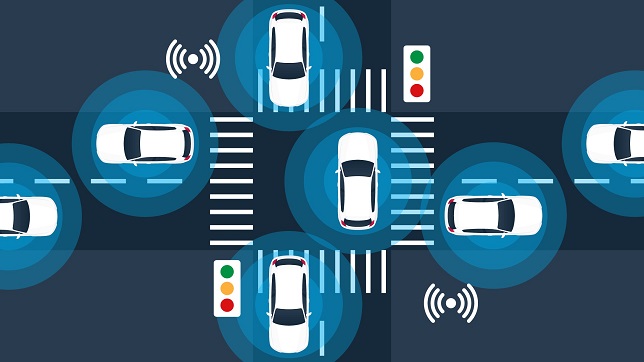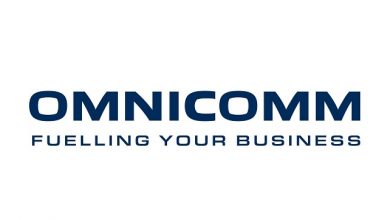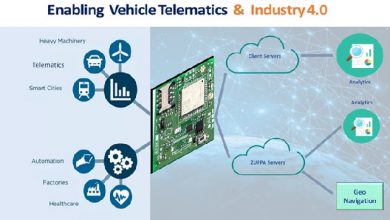Telematics enabling EVs for smarter and sustainable road mobility

We are living in a digital world, where being connected constantly has become a need rather than a luxury. This is now the same for all machines around us, including our vehicles. Vehicles are getting more connected and this too is becoming a requirement rather than a luxury. The world is quickly transitioning to EVs, aided by the pandemic, increasing fuel costs and pollution, the acceleration towards more sustainable mobility options, the requirement for these vehicles being connected is imperative.
There is a lot of data being generated by vehicles these days, in all practical purposes, vehicles are computers on wheels, and as they move around, they generate a lot of data. Electric vehicles, having fewer moving parts compared to their internal combustion counterparts, resemble more of a smartphone on wheels. They require an operating system (just like smartphones), which not only helps interact with the user but also controls all systems and subsystems of the EV from the drivetrain, battery management system, motor control unit etc., the Lithium-ion battery, which is the most crucial part of the vehicle, determines both the cost and range of the vehicle.
In every survey conducted, range is the top reason that consumers and business would consider before buying an electric vehicle. This is known as range anxiety. While advancements in battery technology will continue to chip away at this problem, there is one technology that can help alleviate some of this anxiety: Telematics and IOT. It can also help in solving some of the current transpiration, mobility and safety challenges that we face today.
Telematics collects information and data from the vehicles systems and subsystems like location, speed, pedal positions, G-forces, state of charge, battery health, range, distance to empty etc., and relays this information to the cloud using cellular and satellite connectivity. This data is sliced and diced into meaningful information and is presented to the vehicle owner and/or an authorized third party, like service stations or insurance providers to action upon.
For example: Specific data from the vehicles could be sent to the government and civic bodies of locations of bad roads, pot holes and constant bottlenecks that are causing traffic jams. This data can be captured from the vehicles G-sensor, GPS and speedometer and can be relayed to them under the smart city initiatives. They would be able to leverage this data to make better decisions on road infrastructure, maintenance and upgrades. As a result, they could spend their budgets more effectively while improving safety and contribute positively to the environment as vehicles would spend less time idling in traffic jams.
Data is the new oil & Information is power:
During the industrial revolution, oil was the fuel to propel our technological aspiration and advancements, similarly data will be the new catalyst to propel us through the Digital Revolution.
India is a highly populated and diverse country, with one of the world’s fastest growing automotive markets and still possess immense untapped potential. India will generate more data than most countries, which can be leveraged to develop more accurate region- specific applications as a country.
There are several ways the government can leverage telematics to help consumers and business transition to EVs. One of which is to setup public charging infrastructure for the EVs. Currently there are very few public charging stations which exacerbates the range problem as EV owners worry about not being able to find charging stations as they run of charge. The data on vehicle movement can help the government and businesses setup charge station at appropriate points across the city to help alleviate the range anxiety problem.
Telematics for instance, could help in real time to identify when an EV has finished charging and also help predict the availability of slots at charging stations based on the EV load and schedule. They can send out real time notifications to vehicles in the area, and route those EVs with range exposure to the nearest charging/swapping stations. As a result, you can better optimize the use of limited charging stations. Giving real time information to EV owners on how much charge they would need to travel certain distances can end up being very crucial information so no one vehicle is taking up a spot for too long. We at Intellicar are acting as trailblazers to address these very problems using telematics and IOT. With a state-of-the-art hardware and software, using the data generated from these vehicles, we can connect the vehicles to their owners, provide them with actionable information and insights to help them make better decisions, and more importantly, connect them to the entire ecosystem (Finance companies, insurance companies, charge stations, OEMs, service centers) to provide various value-added services in real time and more effectively.
If finding charging stations becomes less of a concern, mobility companies such as taxi operators and delivery companies will be more likely to transition to EVs as both operational and maintenance costs are significantly lower than internal combustions engines. They can use telematics to track state of charge and distance to empty of the vehicles in their fleet and use that information to better manage their operations, helping dispatchers and by automating dispatch systems, to make informed decisions, such as identifying vehicles which have enough charge to make certain routes and back.
Telematics enables fleet owners to track battery health in real-time. This enables them to make decisions on which batteries are no longer able to hold charge and have reached end of life, or batteries that are running hot, enabling them to replace them before breaking down or causing operational roadblocks. We can also build historical databases to identify which batteries performed best in certain conditions to make better buying decisions. This information is also very useful to battery OEMs to aid them in making faster advancements in battery technology. Telematics is also extremely crucial in making advancements and in monitoring battery safety.
The sharing of anonymized & aggregated data can create a larger value across the entire ecosystem. For example, sharing of anonymized data can help identify where charging stations should be added and also help electricity companies identify where infrastructure should be upgraded. Anonymized data sharing can help accelerate the worlds transition to more sustainable and greener forms of mobility.
India as a country is known to be ingenious and we find our unique ways to innovate. The data we generate will only act as a catalyst to accelerate our capacity to build more affordable and world class EVs in the country, for the country and for the world! This, in essence, is the true power of data and telematics is the foundation of connecting this data.
Author:

Karan Makhija
Co Founder & CEO
Intellicar
Karan Makhija is an automotive engineer and comes with vast and diverse experience during his initial part of his career working with Ashok Leyland and Nissan in a JV, Jaguar Land Rover and Garret turbochargers and also a brief management consulting stint with Accenture focusing towards innovation and product development in the automotive sector. He has also founded Intellicar in 2015.
Published in Telematics Wire


